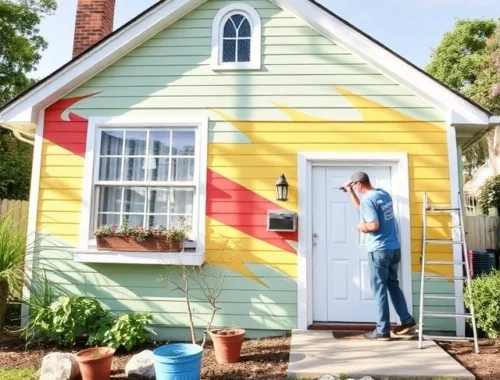
What to Expect During a Shell Space Finish-Out?
Table of Contents
ToggleWhat to Expect During a Shell Space Finish-Out: Timeline, Costs, and Insider Tips
If you’re planning to open a new business and you’ve just signed a lease for a shell space, you might be wondering what happens next. Shell space finish-outs can be exciting—and also a little overwhelming—especially if it’s your first time. Whether you’re building out a medical office, retail shop, salon, or fitness studio, turning that blank canvas into a fully operational business takes time, planning, and the right team.
This article breaks down what to expect from the finish-out process: how long it takes, what it typically costs, and a few insider tips to make things smoother. No industry jargon. Just helpful info you can actually use.
What Is a Shell Space?
A shell space is a commercial unit that’s unfinished. Depending on the type, it could be a cold shell (just four walls, a roof, and a slab) or a white box (which includes basic drywall, minimal HVAC, and sometimes electrical). These spaces are usually leased out with the expectation that the tenant will finish the interior to suit their business needs.
If you’re renting a cold shell, you’ll be responsible for installing everything from HVAC and electrical systems to floors, ceilings, and bathrooms. White box spaces may require fewer upgrades, but still need customization.
Typical Timeline for a Shell Space Finish-Out
The finish-out timeline can vary based on the size of the space, the complexity of the layout, and the speed at which decisions and approvals happen. Here’s a breakdown of what a typical process might look like:
1. Planning and Design: 2 to 4 weeks
This is where you work with your general contractor and sometimes an architect to lay out your space. You’ll determine how many rooms you need, what kind of lighting you want, where equipment should go, and so on. Having a clear idea of your workflow can really help this stage go faster.
2. Permitting and Approvals: 3 to 6 weeks
Once your plans are ready, they’ll need to be submitted to the city for permit approval. This timeline depends on your city’s current workload. Some cities are quick—others take longer. Don’t skip this step or start work without it; fines or stop-work orders can follow.
3. Construction: 6 to 12 weeks
This is the core of the project. The crew comes in to install framing, HVAC, plumbing, and electrical. After inspections pass, they move on to insulation, drywall, paint, flooring, and fixtures. Most general contractors provide weekly progress updates.
4. Final Inspections and Certificate of Occupancy: 1 week
Once everything is built, you’ll need a final walkthrough with your contractor and a city inspection. If everything is up to code, you’ll receive a Certificate of Occupancy (C.O.), which means you’re officially allowed to open your business.
Total Average Timeline: 3 to 5 months
Some smaller or simpler projects can wrap up in 8–10 weeks. Larger or more customized spaces may stretch to 5–6 months, especially if changes are made mid-construction.
Average Cost of a Shell Space Finish-Out
Finish-out costs can vary widely depending on square footage, materials, and the type of business. Here’s a rough idea of what you might expect to pay:
- Basic Office or Retail: $40–$75 per square foot
- Medical or Dental Office: $75–$150 per square foot
- Restaurants or High-Spec Builds: $150+ per square foot
A 2,000 square foot space with basic finishes could cost anywhere from $80,000 to $150,000. If you’re adding exam rooms, custom cabinetry, or special mechanical systems, your cost will go up.
Other costs to consider:
- City permits and fees
- Architectural or MEP (Mechanical, Electrical, Plumbing) drawings
- Utility connections
- Furniture and decor (not included in most construction estimates)
- Inspection fees
Some landlords offer a Tenant Improvement Allowance (TIA) to help offset the cost. Always ask during lease negotiations.
Tips to Make the Process Smoother
1. Choose Your Contractor Carefully
The right general contractor will do more than build walls. They’ll guide you through each phase, explain your options, and help you avoid expensive mistakes. Ask about their experience with similar spaces, and read reviews or ask for references.
2. Finalize Your Layout Early
Changing plans during construction causes delays and cost overruns. Work closely with your contractor and designer upfront to get the layout just right before permits are submitted.
3. Communicate Weekly
A weekly update—whether by email, call, or site visit—helps catch issues early. You don’t need to micromanage, but staying in the loop makes a big difference.
4. Budget a Buffer
Unexpected things come up. Maybe there’s a plumbing issue under the slab or the electrical service needs an upgrade. Build in a 10%–15% contingency in your budget to cover surprises.
5. Don’t Skip the Permit Process
It might be tempting to speed things up by starting work without permits—but don’t do it. Cities require inspections to ensure safety. Unpermitted work can cause delays, insurance problems, and legal issues later.
6. Ask About Value Engineering
If your initial budget estimate is higher than you expected, ask your contractor about value engineering. This is a way to swap certain finishes or materials for more cost-effective options without sacrificing quality.
Common Mistakes to Avoid
Waiting too long to hire a contractor: Some people wait until they’ve signed the lease or received drawings. It’s better to bring a contractor in early to help with budgeting and planning.
- Assuming the landlord will cover everything: Be clear on who’s paying for what. Some leases cover certain upgrades (like HVAC or restrooms), while others leave it all to the tenant.
- Underestimating build-out costs: Shell space is essentially a blank slate. Costs add up fast when you need everything from floors to fixtures.
- Choosing finishes too late: Many finish-out delays happen because fixtures or materials are backordered. Make selections early so your team can place orders in time.
Conclusion
A shell space finish-out is a big step, but it doesn’t have to be overwhelming. With the right guidance and a realistic plan, you can build a space that reflects your brand, supports your workflow, and welcomes your customers. The key is starting with clear goals, a solid team, and an understanding of how the process works. Knowing what to expect puts you in a stronger position to manage your timeline, your costs, and your stress level.
If you’re getting ready to start a commercial finish-out project, take the time to ask questions, plan thoughtfully, and find a partner who understands the unique needs of small business owners. It’s worth doing right.
FAQs
What does shelled space mean?
Unless the space is part of an existing, completed building before an applicant’s proposed project, shelled space is defined as space that is built to satisfy future demands; it is a space that is surrounded by a building shell but otherwise unfinished within.
What is the shell stage of construction?
The shell. The external aspects of a structure, such as its external walls, skeleton, and structural basis, make up its shell. The essential components of a commercial property are protected by its shell, which is usually constructed by developers immediately following the core during the initial stage of development.
What is included in a shell build?
Basic excavation, foundation, framing, siding, roofing, and window and door installation are all common components of a shell home. A SHELL home’s interior is usually left unfinished, with stud walls and a subfloor, so that the homeowner may finish the remaining portions later.
What is a shell warehouse?
The majority of industrial space has the conventional amenities that the landlord will install, such as basic restrooms, offices, and warehouse lighting. Other landlords will just lease the area as “Shell,” which consists of simply the walls and the roof, depending on the market. In essence, it serves as a space’s “skeleton.”
You May Also Like

Avaya’s Workforce Cuts May Reshape Small Business Communication
3 June 2025
House Painting Services
4 January 2025

